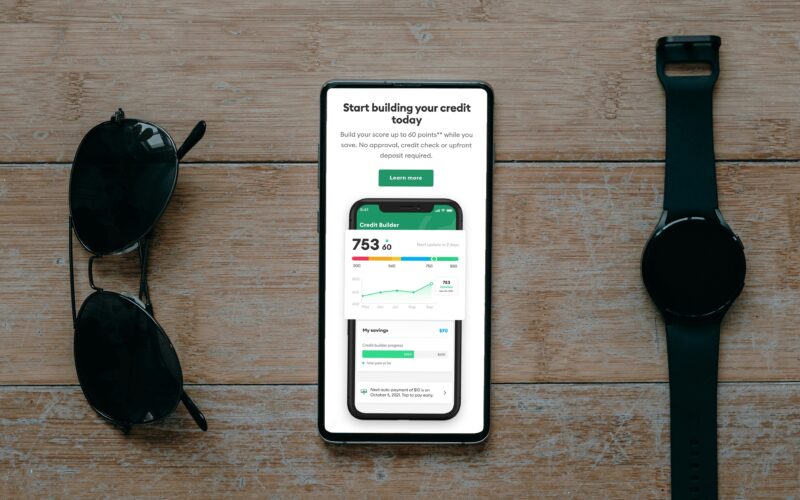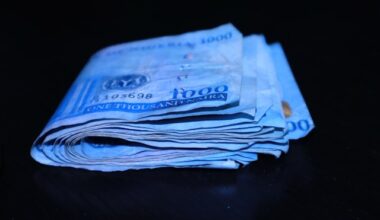Imagine checking your credit score and seeing it slip into the 500s or high 400s — even though you’ve paid every bill on time, kept your balances low, and avoided collections. You scratch your head. “What changed?” is the question weighing on your mind.
For many Americans, there is a hidden culprit causing that unexpected plunge below the 600 mark — not a late payment or identity theft, but something far more subtle. In this article we’ll reveal the secret credit score factor that is quietly dragging credit scores down, explain why it often goes unnoticed, show how it works, and give you practical steps to regain control.
Credit scores below 600? why does it even matter?
Before diving into the secret factor, let’s define our terms and why scores under 600 are so serious. According to industry sources:
- A credit score below 600 is typically considered poor.
- With a sub-600 score, you may still qualify for loans or credit, but you’ll face far worse terms, higher interest rates, fewer options, and greater hurdles.
- Many borrowers don’t realize what caused the drop, which makes the recovery slower and more frustrating.
Given the stakes — car loans, mortgages, rental apartments, even cell-phone and utility services can become harder to secure or more expensive when your score falls under that threshold.
The Big Five Credit Score Factors at a Glance
To appreciate the hidden risk, it helps to see how credit scores are built. For the most common scoring model (FICO) the categories generally weigh like this:
| Category | Weight approx. |
|---|---|
| Payment history | ~35% (Swoop UK) |
| Amounts owed (including credit utilization) | ~30% (Swoop UK) |
| Length of credit history | ~15% (Swoop UK) |
| New credit / hard inquiries | ~10% (Swoop UK) |
| Credit mix | ~10% (Swoop UK) |
So if you were doing everything “right” – paying bills on time, avoiding collections – but your score still dipped, you likely got hit by something in one of those categories that’s less obvious.
Revealing the Secret Credit Score Factor
What is it?
The secret factor is credit-card or revolving-account “utilization” at the moment your issuer reports the balance to the credit bureaus. In simple English: how much of your available credit you’re showing as “used” when the reporting snapshot is taken.
Although many know that “utilization” matters, most people underestimate how timing, balance spikes, and individual account ratios combine to push them below 600.
Why it’s “secret” and often overlooked
- Statements often show a low balance at payment time, but the creditor may report a higher balance earlier in the cycle. That snapshot may have triggered a heavy utilization ratio.
- People assume paying off all balances each month erases any damage — but that is not always true if the high balance was reported.
- Utilization is one of the larger components in the score (amounts owed), but it doesn’t get as much attention as payment history.
- Many overlook that closing old cards, credit-limit reductions, or large single-month purchases can drastically increase utilization overnight.
How it leads to a drop below 600
Let’s walk through an example scenario:
- You have two credit cards, total limit $10,000, you usually carry a $1,000 balance (10% utilization).
- You buy furniture for $4,000 on one card this month. Then pay it off, but the issuer reports the $4,000 balance during the statement closing date, so your utilization reads 40%.
- That spike can trigger a drop in your credit-score model.
- Compound that with: a newer account (shrinking length of history), perhaps one older card was closed, or your credit limit was cut by the issuer — suddenly you might see your score fall into the 500s.
Because utilization is aggregated across all revolving accounts and matters heavily under “amounts owed,” it can push someone who was on the edge of “fair” (600-649) into the “poor” (<600) category without them realizing it.
Comparison: Typical vs Hidden Utilization Pitfalls
| Situation | Why It’s Visible | Why It’s Hidden |
|---|---|---|
| Late payment or collection | You’ll see a “30+ days late” item | Nothing hidden — you know you missed something |
| Lots of new credit inquiries | You applied recently | You remember it happened |
| High utilization snapshot | Balance looks normal on payment date | You didn’t check the reporting date balance |
| Credit-limit reduction or account closed | You might see letter from issuer | You may not realize it impacts your utilization proportion and age of accounts |
| Identity theft | Unfamiliar account shows up | Might go undetected for some time |
As you can see, the hidden utilization trap is specifically sneaky because you may feel like you did everything right but still get penalised.
Why many Americans are unknowingly impacted
- Many consumers focus on “pay bills on time” and “avoid collections” — crucial advice, but insufficient if utilization gets out of control.
- After stimulus checks, pandemic-era purchases, large medical bills, or unexpected expenses, people may charge more than usual; even if they pay off, the high balance may have been reported.
- Credit-card issuers may reduce limits during economic downturns, thus increasing your utilization percentage even if your spending did not rise. This is flagged in expert articles.
- The average consumer seldom checks their utilization snapshot date or recognises that the model uses the ‘balance reported’ not necessarily your current cleared balance.
- The psychological surprise is strong — you look at your bill, you paid it, you feel fine, yet your credit score tumbles. Articles from the major bureaus reassure you there’s always a trigger.
How big of an impact can this have?
Here are some rough guidelines to help you understand how utilization impacts credit scores and how it can drag you below 600.
- According to credit-education sources, keeping utilization under 10% is ideal. (myFICO)
- If utilization rises to 30-50% it can degrade your score significantly – many scoring-models consider >50% utilisation a serious red flag. (centier.com)
- A sudden increase from 10% to 40% utilization can trigger a drop of tens of points. On the edge of 600, even a 20-30 point drop might push you into the “below 600” bracket.
- If additional factors (e.g., credit limit cut, older card closed, more inquiries) coincide, the result is amplified.
Practical steps to detect and fix the issue
Here’s a step-by-step guide you can follow — feel free to adapt to your situation:
- Obtain your credit reports from the three major bureaus: Equifax, Experian and TransUnion. Look specifically for revolving accounts and their balances on the reporting date.
- Find your statement closing dates, and compare your actual balance at closing vs what you think you paid. If you made a large purchase just before closing, that amount may have been reported.
- Check your credit-limit history. Did any issuer reduce your limit recently? That raises utilization even if your balance stayed the same.
- Keep your utilization low, ideally under 10%. Even if you pay in full each month, make full payment before the statement closing date to reduce the balance the issuer reports.
- Avoid closing old cards unless necessary. That can reduce your total available credit and shorten your credit history, which indirectly increases your utilization ratio.
- If you’ve recently paid off large balances, be aware your score may still appear depressed until the next reporting cycle. Be patient — scoring models recognise this.
- Automate alerts or multiple payments per month. Some expert advice suggests making interim payments before the statement close to keep the reported balance lower.
- Monitor your score monthly, so you can detect drops quickly, see patterns tied to specific changes, and take action early.
Example breakdown: How an American might drop from ~650 → 550
Let’s illustrate a plausible scenario:
- Joe has a credit score of ~650, two credit cards with $5,000 limit each ($10,000 total), and normally carries $1,000 balance ($1 K / $10 K = 10% utilization).
- He uses one card for a $3,500 home-repair expense; he intends to pay off over 2 months. But when the issuer reports the statement, it shows $3,500 balance and the other card still has $1K balance = $4,500 total balance on $10K limit = 45% utilization.
- Score drops say ~30-40 points because of the big jump in utilization. At that same time, his oldest card was closed due to inactivity (shortening credit history) and one hard inquiry occurred when he applied for a small appliance loan.
- The combined effect pushes his score from ~650 into the ~555-595 range (below 600). Meanwhile, Joe thinks “I paid on time always – how come?”
- Because the utilization snapshot occurred, his payment history is still fine, but the “amounts owed” slice of his score took a blow, silently and fast.
When Utilization Isn’t the Only Factor But the Hidden One Amplifies It
It’s important to note that utilization is rarely the only reason a score drops – it often acts in tandem with other things. Some examples:
- A late payment plus a utilization spike = double damage.
- A collection account plus high utilization = major drop.
- A credit-limit reduction (raising util%) plus a new hard inquiry = triggering the secret factor effect.
So while you may be watching the obvious items (late payments, collections), making sure the hidden utilization factor is under control is what separates staying in the fair range vs dropping below 600.
Why you should act now (and not wait)
- Credit scores change monthly. A drop today may limit your ability to borrow or get favourable terms for months.
- The longer you stay under 600, the more damage debt costs you – higher interest, fewer options, more risk.
- Fixing utilization is relatively quick compared to healing a late payment or collection which may linger for years.
- By mitigating this secret factor, you protect yourself from unexpected drops even when everything “else” seems fine.
In the world of credit scoring, the obvious rules still apply: pay on time, avoid collections, manage debt. But what most Americans don’t see coming is the silent slide caused by how much of your available credit is used at the moment your issuer reports it. This secret factor — high utilization snapshot — can drag your score below 600 even when you feel you’re doing everything right.
Recognising this hidden lever gives you power:
- You can monitor your utilization before it’s reported.
- You can strategically pay down balances before closing dates.
- You can maintain credit limits and old accounts to keep the denominator (available credit) strong.
By taking control of this factor, you shift from reactive (watching for a drop) to proactive (preventing it altogether).
If you’re seeing your score wavering or falling and the usual suspects (late payments, collections) aren’t the cause, start by checking your utilization snapshot. It might just be the missing piece of the puzzle.
Why Thousands of Americans Are Losing Savings Overnight: The Silent Bank Freeze Crisis






1 comment